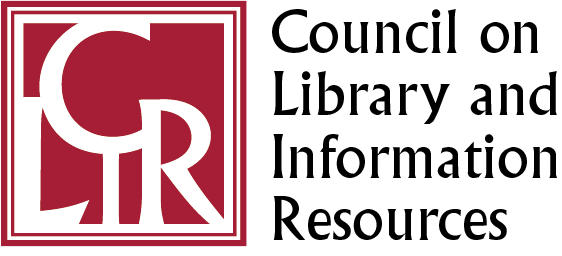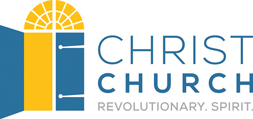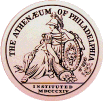St. Michael's Church, Trenton, NJ
Metadata
Title
St. Michael's Church, Trenton, NJ
Digital Identifier
St. Michael's Church, Trenton, NJ
Description
A 1703 land grant from Governor Inglesby of the Jerseys opens St. Michael's document collection. It gives four English farmers land to build a church on the hills north of the Delaware falls which they shared with Scot farmers. The latter soon built themselves what was to become First Presbyterian Church (now of Ewing). In the early years, Anglicans and Presbyterians frequently shared worship and church governance, as neither had a full-time minister. St.Mary's (Anglican) church in Burlington had a full sanctuary building since 1703 and was the 'mother church' for the region, often supplying the Trenton area its minister. The founder of Trenton, William Trent, arrived from Philadelphia in 1719, joining the what was to become St. Michael's parish, and by the 1740's land in Trenton proper was given to the congregation by General John Coxe, son of a prominent parishioner from St. Mary's, Daniel Coxe, who was the first Grand Master of the Scottish Rite of Masons on the continent. St. Michael's original Trenton sanctuary was completed in 1751, then enlarged in 1801, 1819, and the 1850's to its present footprint.
To avoid being embroiled in national politics and endangering its future, the church was closed immediately after the signing of the Declaration of Independence. It served as a Hessian barracks and Continental hospital during the war, and worship resumed at the war's conclusion. It's vestry included David Brearley, who in 1787, as Chief Justice of NJ, served as Chairman of the "Committee on Postponed Parts" in the Constitutional Convention, playing a substantial role in shaping the final document while brokering the decisions that contributed to our current form of government. In 1801, St. Michael's was used as the location for the Convention of the Protestant Episcopal Church in the United States, at which time the current Articles of Religion were ratified. There, at the Annual Convention in 1815 the NJ Diocese was founded and its first bishop elected. Throughout the middle and late 19th century, St. Michael's founded mission schools and churches in and around Trenton. A detailed history of the church was written in the 1920's by Hamilton Schuyler, and is available online. The documents in the collection were used to write that history and thus far include the parish proceedings from 1750 through the 1850's, the engineering specifications for the 1819 renovations, the church charter, along with birth, marriage, and death records from the period. An interesting drawing of the layout of pews, which seems to be in David Brearley's handwriting, appears in the parish books. The documents also contain one of our original Books of Common Prayer from the 1740's, with marked-up changes, post-Revolution.
The parish of the English Church was founded in 1703 on farmlands outside of town. The founder of Trenton, William Trent, arrived from Philadelphia in 1719, joining St. Michael's parish, and the sanctuary in town was completed in 1751. To avoid being embroiled in national politics and endangering its future, the church was closed immediately after the signing of the Declaration of Independence. It served as a Hessian barracks and Continental hospital during the war. It's vestry included David Brearley, who in 1787, as Chief Justice of NJ, served as Chairman of the "Committee on Postponed Parts" in the Constitutional Convention. In 1801 the Convention of the Protestant Episcopal Church in the United States was held there and the current Articles of Religion were ratified.
To avoid being embroiled in national politics and endangering its future, the church was closed immediately after the signing of the Declaration of Independence. It served as a Hessian barracks and Continental hospital during the war, and worship resumed at the war's conclusion. It's vestry included David Brearley, who in 1787, as Chief Justice of NJ, served as Chairman of the "Committee on Postponed Parts" in the Constitutional Convention, playing a substantial role in shaping the final document while brokering the decisions that contributed to our current form of government. In 1801, St. Michael's was used as the location for the Convention of the Protestant Episcopal Church in the United States, at which time the current Articles of Religion were ratified. There, at the Annual Convention in 1815 the NJ Diocese was founded and its first bishop elected. Throughout the middle and late 19th century, St. Michael's founded mission schools and churches in and around Trenton. A detailed history of the church was written in the 1920's by Hamilton Schuyler, and is available online. The documents in the collection were used to write that history and thus far include the parish proceedings from 1750 through the 1850's, the engineering specifications for the 1819 renovations, the church charter, along with birth, marriage, and death records from the period. An interesting drawing of the layout of pews, which seems to be in David Brearley's handwriting, appears in the parish books. The documents also contain one of our original Books of Common Prayer from the 1740's, with marked-up changes, post-Revolution.
The parish of the English Church was founded in 1703 on farmlands outside of town. The founder of Trenton, William Trent, arrived from Philadelphia in 1719, joining St. Michael's parish, and the sanctuary in town was completed in 1751. To avoid being embroiled in national politics and endangering its future, the church was closed immediately after the signing of the Declaration of Independence. It served as a Hessian barracks and Continental hospital during the war. It's vestry included David Brearley, who in 1787, as Chief Justice of NJ, served as Chairman of the "Committee on Postponed Parts" in the Constitutional Convention. In 1801 the Convention of the Protestant Episcopal Church in the United States was held there and the current Articles of Religion were ratified.
Selected Items from the Collection
Book of Common Prayer, 1742
Full title: "The Book of Common Prayer, and Administration of the Sacraments, and Other Rites and Ceremonies of the Church, According to the Use of the Church of England: Together with the Psalter or Psalms of David, Pointed as They are to be Sung or…
Charter, 1703
A 1703 land grant from Governor Inglesby, giving four English farmers land to build a church on the hills north of the Delaware Falls, which they shared with Scottish farmers. In 1751 St. Michael's original Trenton sanctuary was built on this land.
Loose Sheets, 1770-1862
A set of many loose documents pertaining to the history of St. Michael's, dating from 1770 to 1862. Several of the documents are accompanied by typewritten transcripts.
Included are: a record of the official naming of St. Michael's (submitted 1795,…
Included are: a record of the official naming of St. Michael's (submitted 1795,…
Minutes, 1761-1818
Meeting minutes of the wardens and vestry of St. Michael's, dating from 1761 to 1818. Each entry includes the date and location of the meeting, persons present and business discussed. Business includes but is not limited to: the hiring and payment of…
Minutes, 1818-1857
Meeting minutes of the wardens and vestry of St. Michael's, dating from 1818 to 1857. Entries include the date, names of those present, and business discussed. Business includes but is not limited to: elections and appointments, repairs and…
Minutes, 1857-1881
Meeting minutes of the wardens and vestrymen of St. Michael's, dating from 1857 to 1881. Each entry includes the date and place of the meeting, names of attendees, and a summary of the business discussed. Business includes but is not limited to:…
Minutes, Register, 1752-1855
Meeting minutes of the wardens and vestrymen of St. Michael's begin on image 5, in 1755. Entries jump around chronologically, and were likely copied over from other records. The latest entry is dated 1818.
The register portion of the document begins…
The register portion of the document begins…
Records, 1855-1867
Records of St. Michael's baptisms, confirmations, communicants, marriages and burials, dating from 1855 to 1867. Most entries span verso and recto pages.
Baptismal records run from page 3 to page 37, and include date, name, parents' names, date of…
Baptismal records run from page 3 to page 37, and include date, name, parents' names, date of…
Register, 1771-1852
Record of christenings, marriages, burials and confirmations performed by St. Michael's from 1771 to 1852. Records are listed in chronological groupings. Christening records include date, name, parents' name, and age at the time of christening.…





